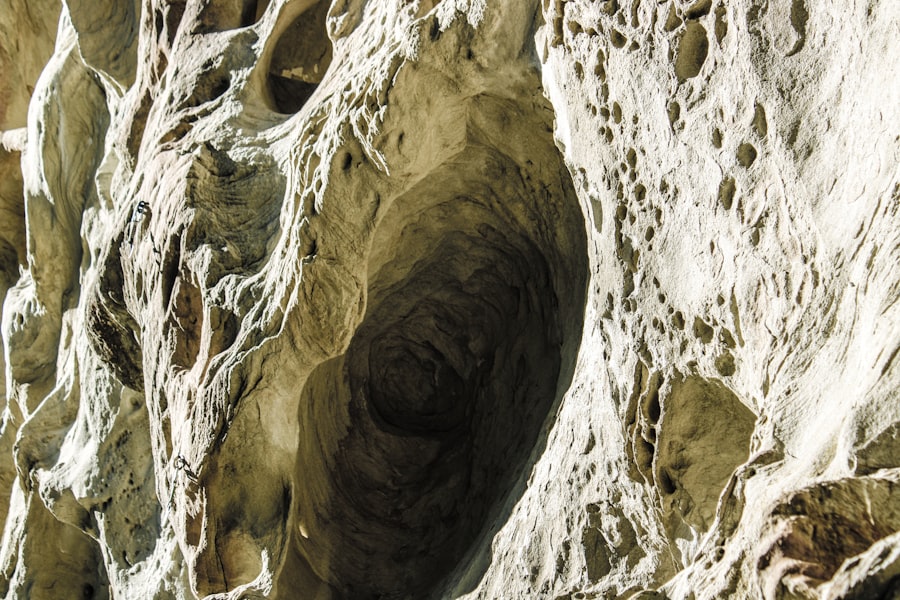Togo, a small West African nation bordered by Ghana, Benin, and Burkina Faso, is endowed with a variety of natural resources that play a crucial role in its economy and the livelihoods of its people. The country’s geographical diversity, ranging from coastal plains to mountainous regions, contributes to a rich tapestry of ecosystems that support agriculture, forestry, fisheries, and mineral extraction. Despite its modest size, Togo‘s natural resources are significant not only for domestic consumption but also for export, providing vital income and employment opportunities for its population.
The management and sustainable utilisation of these resources are paramount for Togo’s development. As the nation grapples with the challenges of economic growth, environmental sustainability, and social equity, understanding the full spectrum of its natural resources becomes essential. This article delves into the various natural resources found in Togo, exploring their potential and the challenges associated with their management.
By examining agricultural, mineral, forestry, water, energy, and fisheries resources, we can gain insight into how Togo can harness these assets for sustainable development.
Summary
- Togo is rich in natural resources, including agricultural, mineral, forestry, water, energy, and fisheries resources.
- The agricultural sector in Togo is a significant contributor to the country’s economy, with key crops including cotton, coffee, and cocoa.
- Togo has significant mineral resources, including phosphates, limestone, and marble, which are important for the country’s industrial development.
- The forestry sector in Togo is important for timber production and contributes to the country’s environmental conservation efforts.
- Togo’s water resources are essential for agriculture, industry, and domestic use, but the country faces challenges in managing and conserving these resources sustainably.
- Togo has potential for renewable energy development, including solar and wind power, which can help address the country’s energy needs and contribute to sustainable development.
- The fisheries sector in Togo provides employment and a source of protein for the population, but faces challenges such as overfishing and environmental degradation.
- Togo faces challenges in managing its natural resources sustainably, including deforestation, soil degradation, and water pollution, but also has opportunities for sustainable management through conservation and renewable energy development.
Agricultural Resources in Togo
Agricultural Production
The fertile lands of Togo support a variety of crops, including yams, cassava, maize, millet, and rice. Yams, in particular, are a staple food and hold cultural significance in Togolese society.
Yam Production
The country is one of the largest producers of yams in West Africa, with production concentrated in the central and northern regions. The favourable climate and diverse agro-ecological zones allow for multiple cropping seasons, enhancing food security and providing income for farmers.
Cash Crops and Challenges
Cotton is one of the most important cash crops in Togo, serving as a key export product. The cotton industry not only generates foreign exchange but also supports thousands of smallholder farmers who rely on it for their livelihoods. Other cash crops such as coffee and cocoa are also cultivated, although on a smaller scale compared to cotton. The government has implemented various initiatives to improve agricultural productivity through better access to inputs, training programmes for farmers, and investment in irrigation systems. However, challenges such as land degradation, climate change impacts, and limited access to markets continue to hinder the full potential of Togo’s agricultural resources.
Mineral Resources in Togo

Togo is rich in mineral resources, which include limestone, phosphate rock, gold, and clay. Phosphate mining is particularly significant as Togo possesses one of the largest phosphate reserves in Africa. The mining of phosphate rock is concentrated in the central region of the country and serves as a critical input for fertiliser production.
This not only supports local agriculture but also positions Togo as an important player in the global fertiliser market. The phosphate industry has attracted foreign investment and has the potential to generate substantial revenue for the government. Gold mining is another emerging sector in Togo’s mineral landscape.
Although not as developed as phosphate mining, gold exploration has gained momentum in recent years. Several mining companies have been granted exploration licenses, and initial findings suggest that Togo may have untapped gold reserves. The government is keen to promote responsible mining practices to ensure that the benefits of mineral extraction are equitably distributed among local communities.
However, the sector faces challenges such as illegal mining activities and environmental concerns related to land degradation and water pollution.
Forestry Resources in Togo
| Forestry Resources in Togo | Metrics |
|---|---|
| Total Forest Area | Approximately 4,600 square kilometers |
| Forest Coverage | Around 20% of the total land area |
| Primary Forest | Less than 1% of the total land area |
| Deforestation Rate | Estimated at 0.2% per year |
Forests cover approximately 30% of Togo’s land area and are vital for biodiversity conservation, climate regulation, and the livelihoods of many rural communities. The country’s forests are home to a variety of flora and fauna, including several endemic species. Timber production is an important economic activity; however, unsustainable logging practices pose significant threats to forest ecosystems.
The government has recognised the need for sustainable forest management practices to balance economic interests with environmental conservation. In addition to timber, forests provide non-timber forest products (NTFPs) such as fruits, nuts, and medicinal plants that are crucial for local communities’ subsistence. These resources contribute to food security and health care while also offering income-generating opportunities through local markets.
Community-based forest management initiatives have been introduced to empower local populations in managing their forest resources sustainably. These initiatives aim to enhance community participation in decision-making processes while promoting conservation efforts that benefit both people and nature.
Water Resources in Togo
Water resources are essential for agriculture, domestic use, and industrial activities in Togo. The country is endowed with several rivers, lakes, and groundwater aquifers that provide a vital supply of freshwater. The Mono River is one of the most significant water bodies flowing through Togo, serving as a source of irrigation for agricultural activities and supporting local fisheries.
The government has initiated various projects aimed at improving water management and access to clean drinking water. These initiatives include the construction of boreholes and water treatment facilities to ensure that rural communities have access to safe water sources.
Additionally, efforts are being made to promote integrated water resource management (IWRM) practices that consider the interconnectedness of water systems with other natural resources. Despite these efforts, challenges such as pollution from agricultural runoff and inadequate infrastructure persist, necessitating ongoing attention to water resource management.
Energy Resources in Togo

Energy resources in Togo are primarily derived from biomass, hydroelectric power, and fossil fuels. Biomass remains the dominant source of energy for cooking and heating in rural areas, where traditional fuels such as wood and charcoal are widely used. However, reliance on biomass poses environmental challenges such as deforestation and air pollution.
The government is actively promoting alternative energy sources to reduce dependence on biomass and improve energy access. Hydroelectric power generation is another critical component of Togo’s energy landscape. The country has significant hydroelectric potential due to its river systems; however, only a fraction of this potential has been harnessed thus far.
The Akosombo Dam on the Volta River provides electricity not only to Ghana but also supplies power to parts of Togo through interconnections.
Additionally, there is growing interest in solar energy as a viable alternative given Togo’s abundant sunlight throughout the year.
Initiatives promoting solar home systems have emerged as a means to provide electricity to off-grid communities.
Fisheries Resources in Togo
Togo’s fisheries resources are vital for food security and economic development. The coastal waters along the Gulf of Guinea support a diverse range of fish species that are crucial for both subsistence fishing and commercial activities. Artisanal fishing plays a significant role in local economies, providing livelihoods for thousands of fishermen and their families.
Fish is a primary source of protein for many Togolese people; thus, maintaining healthy fish stocks is essential for nutrition. However, overfishing poses a significant threat to the sustainability of fisheries resources in Togo. Illegal fishing practices and inadequate regulation have led to declining fish populations, impacting both local communities and commercial enterprises reliant on fishing activities.
The government has recognised these challenges and is working towards implementing sustainable fisheries management practices that include monitoring fish stocks and enforcing regulations against illegal fishing. Community-based initiatives aimed at promoting responsible fishing practices have also been introduced to empower local fishermen in managing their resources sustainably.
Challenges and Opportunities for Sustainable Management of Togo’s Natural Resources
The sustainable management of Togo’s natural resources faces numerous challenges that require concerted efforts from various stakeholders. One major challenge is the pressure exerted by population growth on land and water resources. As urbanisation accelerates and agricultural demands increase, there is a heightened risk of resource depletion and environmental degradation.
Additionally, climate change poses significant threats through altered rainfall patterns and increased frequency of extreme weather events that can disrupt agricultural production and exacerbate water scarcity. Despite these challenges, there are ample opportunities for enhancing sustainable resource management in Togo. The government has shown commitment towards integrating sustainability into national policies by promoting initiatives that encourage responsible resource use across sectors.
Collaborative efforts involving local communities can foster greater awareness about conservation practices while ensuring that resource management decisions reflect local needs and knowledge. Furthermore, investment in technology can play a pivotal role in improving resource efficiency across agriculture, energy production, and fisheries management. For instance, adopting precision agriculture techniques can optimise input use while minimising environmental impacts.
Similarly, expanding renewable energy sources can reduce reliance on fossil fuels while enhancing energy access for underserved populations. In conclusion, while Togo faces significant challenges regarding its natural resources’ sustainable management, there exists a wealth of opportunities that can be harnessed through collaborative efforts among government agencies, local communities, non-governmental organisations (NGOs), and private sector actors. By prioritising sustainability in resource management practices, Togo can pave the way towards a more resilient economy that benefits both its people and the environment.
FAQs
What are the main natural resources of Togo?
Togo’s main natural resources include phosphate, limestone, marble, and arable land for agriculture.
Where are the phosphate deposits located in Togo?
The phosphate deposits in Togo are primarily located in the southern part of the country, particularly in the regions of Maritime and Plateaux.
Where can limestone be found in Togo?
Limestone deposits in Togo are mainly located in the central and northern regions of the country, particularly in the regions of Centrale and Kara.
Are there marble deposits in Togo?
Yes, Togo has significant marble deposits, which are mainly found in the northern part of the country, particularly in the region of Kara.
How is Togo utilizing its natural resources for economic development?
Togo is working to develop its phosphate and limestone mining industries to boost its economy, and it is also focusing on sustainable agriculture to make the most of its arable land.


